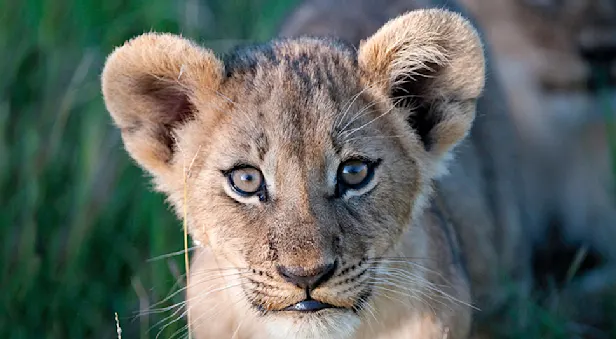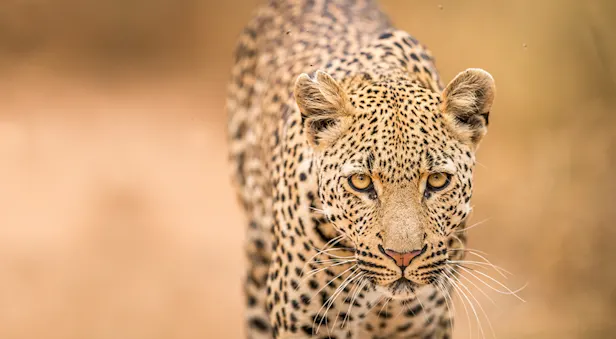What to Pack for a Southern Africa Safari
The following packing list contains general recommendations for a Southern Africa safari. If you are currently booked on a safari with Nat Hab, please consult your pre-departure materials for the most up-to-date packing list specific to your trip, as packing recommendations vary based on the season. You will receive these pre-departure materials 60-90 days before your departure.
Items indicated in color below are typically available in the Nat Hab Gear Store. Please note that due to global supply chain issues beyond our control, we cannot guarantee that every item will always be in stock.
Adventure Guidelines
A water-resistant daypack/backpack to carry cameras and other items is handy while on wildlife drives and activities.
While on safari, it is suggested (although not required) that you do not wear bright or white-colored clothing, as it can sometimes spook the animals. In addition, army camouflage uniforms and hats are forbidden (although khaki is fine).
We ask that you refrain from bringing hair dryers, irons, radios, excess clothing or toiletries, etc. All points of this adventure are quite casual, and we recommend that you keep your luggage down to the basics. Also, please remember not to pack your essentials in checked luggage in case it is delayed or lost by the airlines.
How to dress for different seasons:
— Mid-April through early-September – Remember, just because it is Africa does not mean it is always warm. During these months we recommend dressing in layers with a fleece pullover, a jacket/windbreaker, gloves and hat. This way, you can take off clothing as the sun warms throughout the day.
— Mid to late September through late November – These months can be quite warm. Late October is generally the hottest time of the year, with temperatures often reaching into the 100s° F. We recommend dressing in layers in case of cooler temperatures during early morning and evening wildlife drives, followed by hot mid-day temperatures.
— Late November through early April – These months are considered the green season. Lightweight, quick-drying clothing and waterproof rain jacket, with hood, are recommended.From a cultural perspective, tank tops/sleeveless shirts are acceptable for women to wear while on safari.
If you are traveling to Kafue National Park in Zambia and/or to areas of Zimbabwe other than Victoria Falls, you should avoid all shades of blue and black, since these colors attract tsetse flies.
If you are traveling to Zambia, please do not bring any over-the-counter medications containing diphenhydramine (active ingredient in Benadryl) as this ingredient is on Zambia’s list of controlled substances.
Clothing
Lightweight neck gaiter (included in your pre-departure package)
—Provides sun, wind and/or dust protection.Silk, wool or polypropylene long underwear for layering (tops & bottoms)
Lightweight, “breathable,” windproof outer shell or jacket (only needed mid-April through early September)
1-2 sweaters or fleece pullovers
— If traveling mid-April through early September, it is a good idea to bring two so that one can be worn if the other needs to be washed. During winters in Southern Africa, evenings and early mornings in some areas can reach near-freezing temperatures, so warm layers are key.Lightweight down sweater/jacket (only needed June through early September)
Warm hat, gloves and scarf (only needed mid-April through early September)
Lightweight, “breathable,” waterproof rain jacket, rain pants & inexpensive rain poncho (only needed during the green season, late November through early April)
Lightweight, low-cut hiking/walking shoes
Extra pair of shoes and/or Teva-type sandals
— During the cooler months of June-September, you may want a second pair of comfortable closed-toe shoes as it can be quite cold, especially during wildlife drives. Sandals may still be worn while in camp, however you may decide to get by without them in order to save space in your luggage.
— During the warmer months of October-May, we find that Teva-type sandals can be very comfortable on wildlife drives and are practical since they tend to dry quickly.2-3 T-shirts or polo-style shirts
— If traveling late November through early April, we recommend bringing 3.2-4 pairs long pants (Or nylon, zip-off pants—practical for cool mornings and warmer afternoons.)
Swimsuit (optional)
— Some camps have plunge pools/swimming pools.Warm sleepwear
Hat with brim (for sun protection)
Socks
— Moisture-resistant/moisture-wicking are preferred for safari walks and longer hikes. Smartwool is a comfortable brand.Undergarments
Polypropylene or silk thermal underwear tops and bottoms (only needed June through early September)
Instant cooling scarf such as EnduraCool (only needed mid-September through mid-November)
Additional Items
Cash
— For discretionary gratuities (you may want to bring envelopes for discreet presentation)
— For personal spending (souvenirs, Internet use, or food and beverages not included in your trip fee)Binoculars
— Binoculars are definitely a must! We strongly suggest that each client bring his or her own pair of binoculars as you will be using them continuously while on wildlife drives. If possible, we highly recommend investing in a good quality pair. Initially, the cost may be higher, but it definitely will enhance your wildlife viewing experience. You will get the most out of them if you practice using them at home and make a habit of having them with you regularly on the adventure. Waterproof binoculars work well, but are not required.Reusable water bottle (included in your pre-trip package)
—In our continuing effort to operate our adventures with as little impact on the environment as possible, you will receive a reusable water bottle (unless you opted out on your Booking Form) to take with you on your adventure. We will provide drinking water throughout the adventure for you to refill your bottle. By doing this, you will avoid using multiple disposable plastic bottles.Insect repellent and anti-itch ointment (Although there are typically fewer mosquitos during the dry season, there is always a possibility of encountering them.)
— Repellent is provided at all camps on our scheduled itineraries so you only need to bring it if you wish to use a specific brand.
— Repellents containing DEET are the most effective against mosquitoes, but please be aware that DEET is a very strong ingredient which can damage plastics, clothing and equipment.Outlet adapter and/or power converter
Sunglasses (with U.V. filter and secure strap)
— In addition to being helpful for sun protection, sunglasses can also be useful eye protection for walks or drives in the bush.Headlamp or small flashlight
— Flashlights are provided at most camps, but we still recommend that each traveler bring a small, but powerful flashlight (or headlamp) to have for his or her own personal use.Earplugs
Shampoo, conditioner, lotion and soap/body wash
— Provided free of charge at all of our camps in Southern Africa so you only need to bring these items if you wish to use a specific brand.Toothbrush and paste
Deodorant
Brush or comb
Sunscreen and lip balm (at least SPF15)
Prescription medications and favorite remedies
— For headaches, colds, upset stomach, skin irritations, diarrhea, etc.
— If you are prone to motion sickness you may want to bring your favorite remedy for small plane transfers.
— Again, if you are traveling to Zambia, please do not bring any over-the-counter medications containing diphenhydramine (active ingredient in Benedryl) as this ingredient is on Zambia’s list of controlled substances.Electrolyte/flavor crystal packets (optional)
— Can be added to water to replace fluids in case of intestinal illness and/or to enhance the taste to encourage hydration.Prescription glasses/contact lenses
Hand sanitizer and/or hand wipes
Battery-operated alarm clock/wristwatch
Reusable waterproof bags
— Several sizes for wet or dirty clothing and to protect camera equipment.Hiking poles (optional, only if traveling to Namibia)
— If you are bringing hiking poles, they must be able to fit in your check-in luggage, as you generally will not be allowed to carry them on the plane.
Explore Southern Africa's Wildlife on These Safaris

Botswana: Kalahari, the Delta & Beyond
Witness the spectacle of Botswana during the green season under changing skies, as the desert bursts forth with life, wildlife thrives with seasonal water, and new births fill the plains.

























